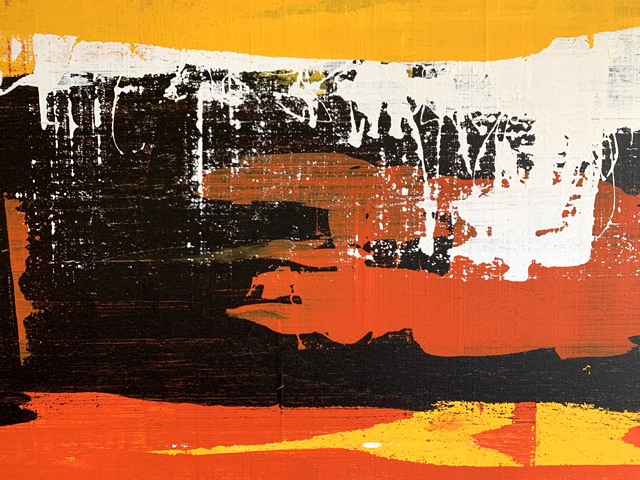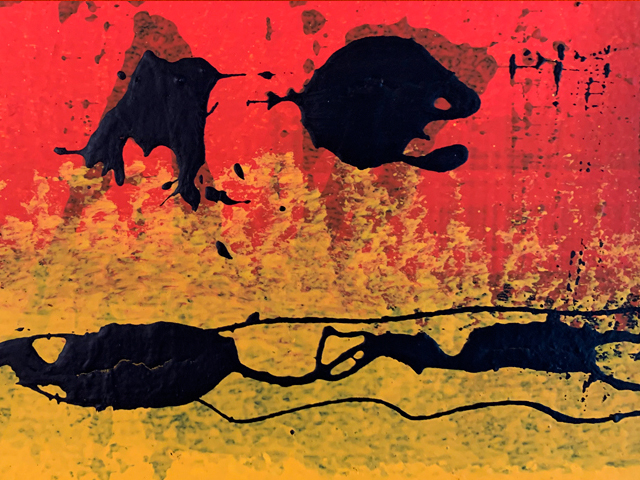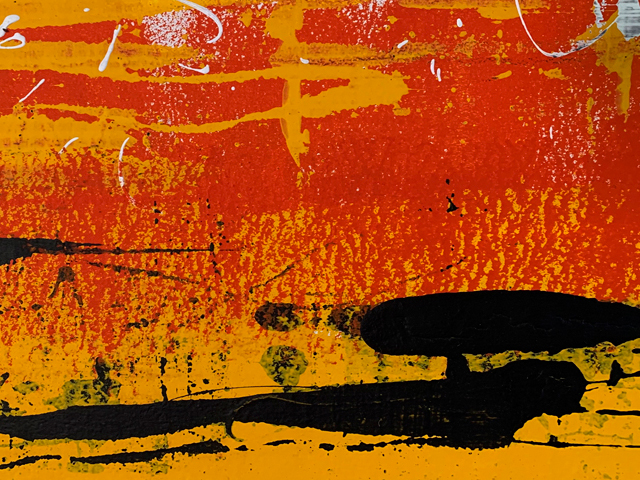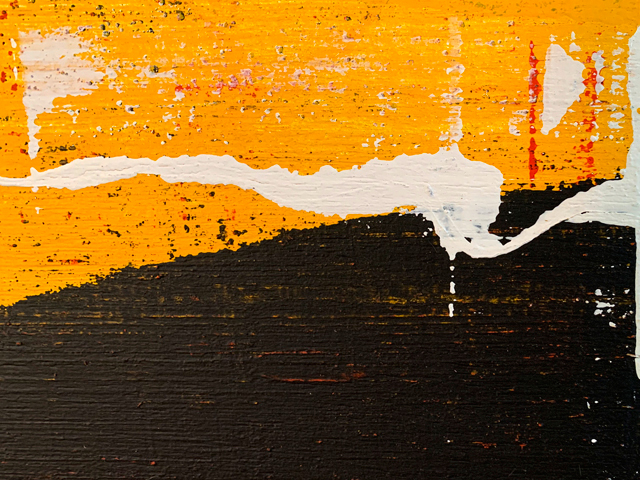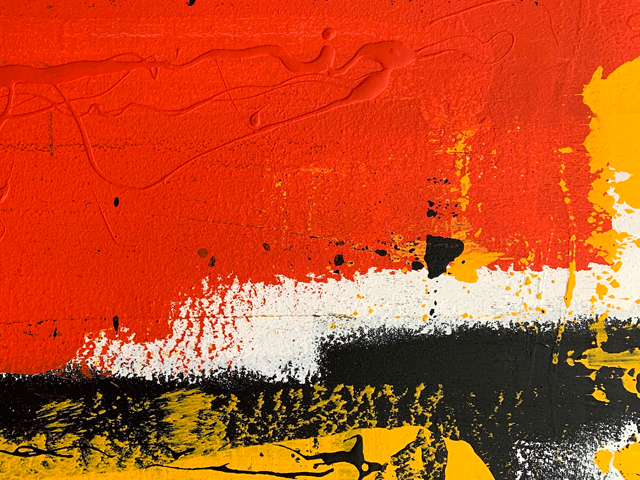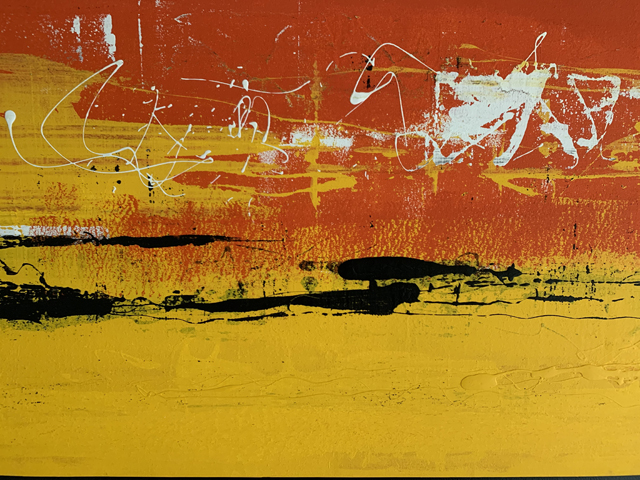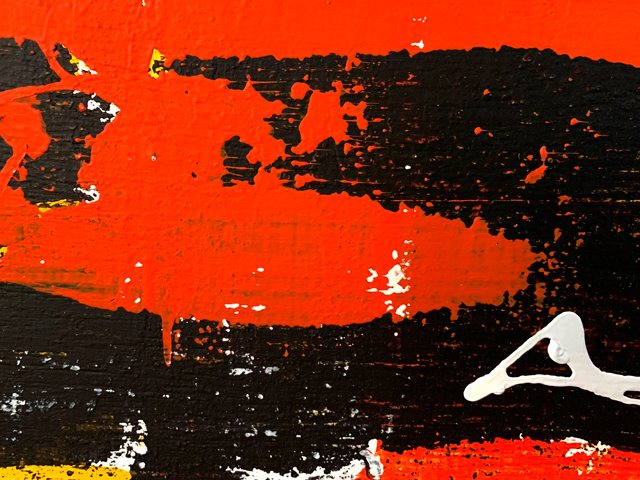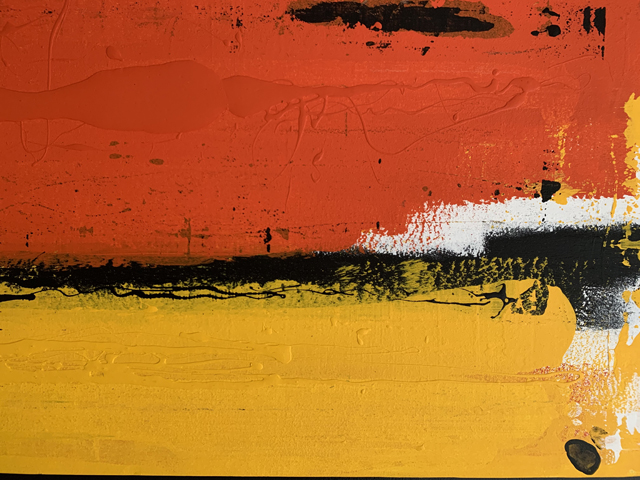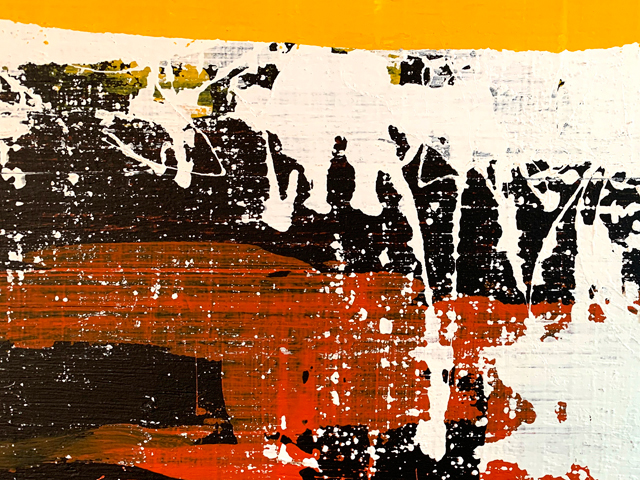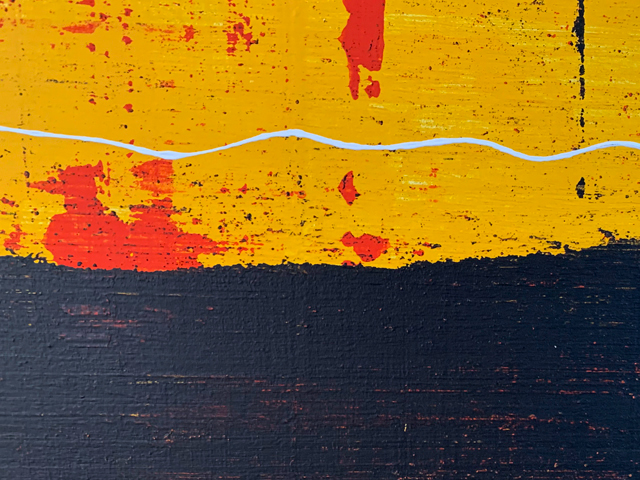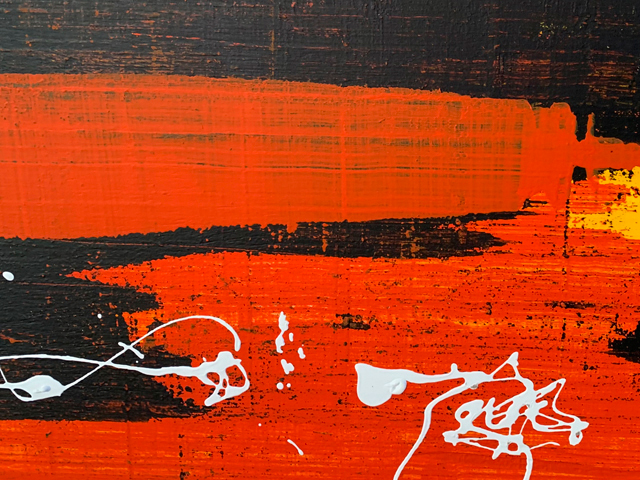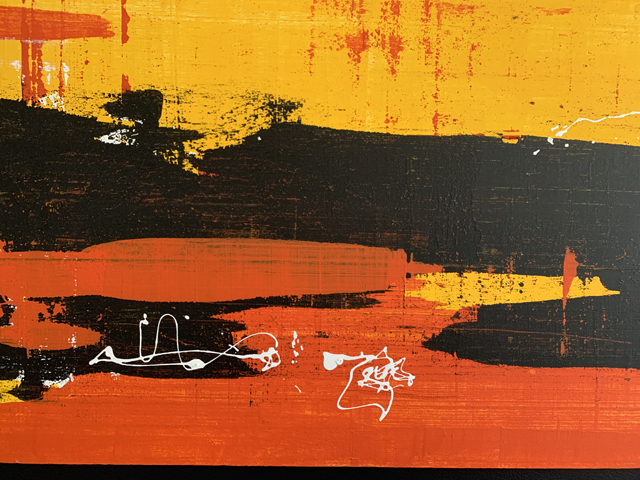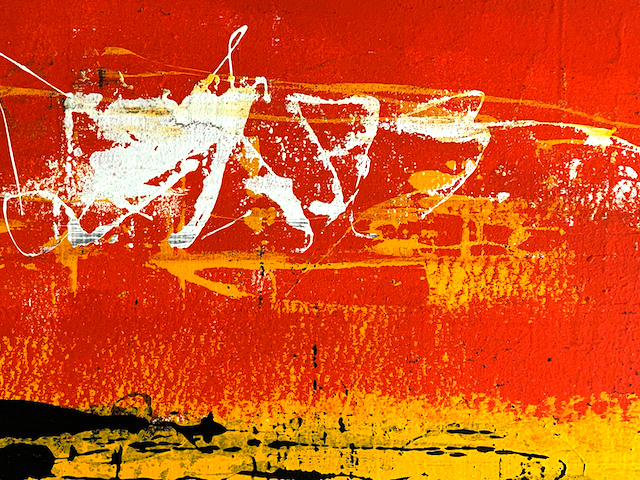Fort Federal Hill At Sunset, Baltimore
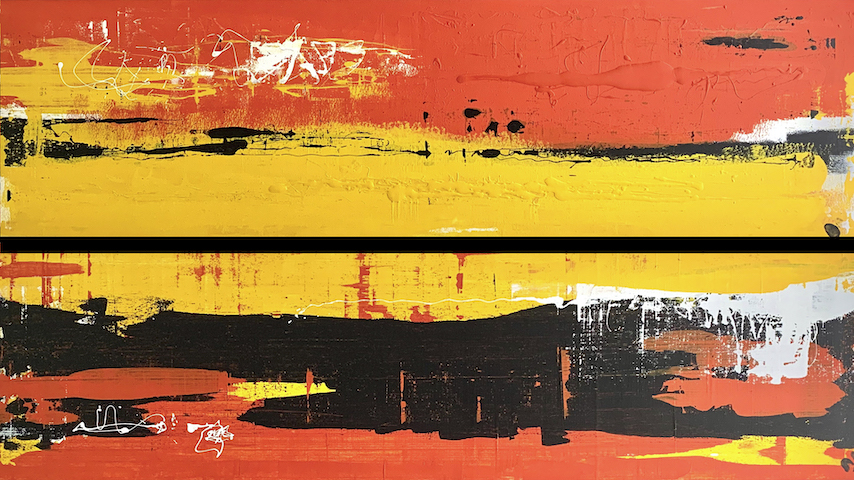
Nine feet in length. Four-foot wide. Mixed media on two vertically distributed panels.
Reflections of the flaming sky. Refractions of the setting sun.
Explosions of fireworks. Deadly cannonades. “And the rockets’ red glare, the bombs bursting in air.”
Blood gushing from the wounded or the maimed. Blood spilled by the dying. After all, this is a tableau depicting an event of the Civil War.
The smoldering ruins of Baltimore in the distance.
The dark of the coming night. The physical, moral and intellectual darkness of war.
The dark of the coming night…
The original “Fort Federal Hill At Sunset, Baltimore” was painted by Sanford Robinson Gifford in 1862 while serving as a corporal with New York State’s Seventh Regiment National Guard stationed in Maryland during the Civil War. At that time
he was one of America’s most famous landscape painters. Although Gifford never experienced direct combat while in Maryland, the wartime experience transformed his paintings into meditations about the individual caught in the flow of history .
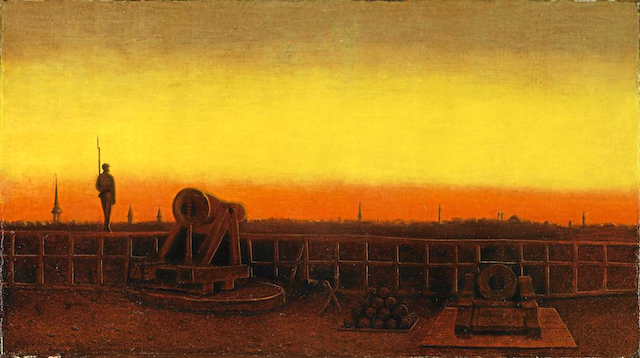
However, Gifford’s painting shows no outer movement at all. Any dramatic tension is relegated to the viewer’s imagination.
Gifford’s Fort Federal Hill At Sunset, Baltimore
New Fort Federal Hill At Sunset, Baltimore
This twenty-first century interpretation keeps the original chromism and overall mapping but transforms them into a dynamic composition by adding new artifacts, hues, iterations and symbols.
Here comes the gallery:
If framed individually, any of the details above could be construed as a stand-alone work of art.
Each of the painting’s two panels is signed in the lower right corner by the artist using his thumb imprint.
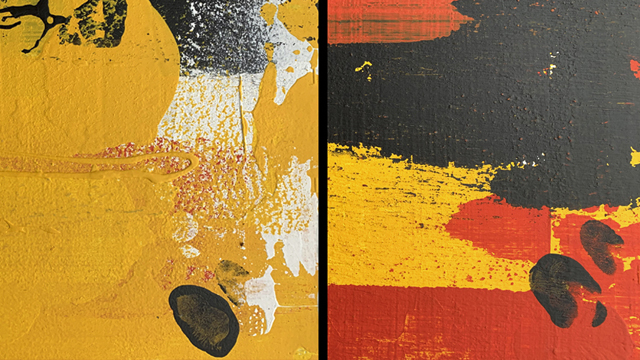
The end.
Francis Scott Key’s “Star Spangled Banner” lines quoted above literally refer to the Revolutionary War but we herein applied them under a poetic license.
The end.
